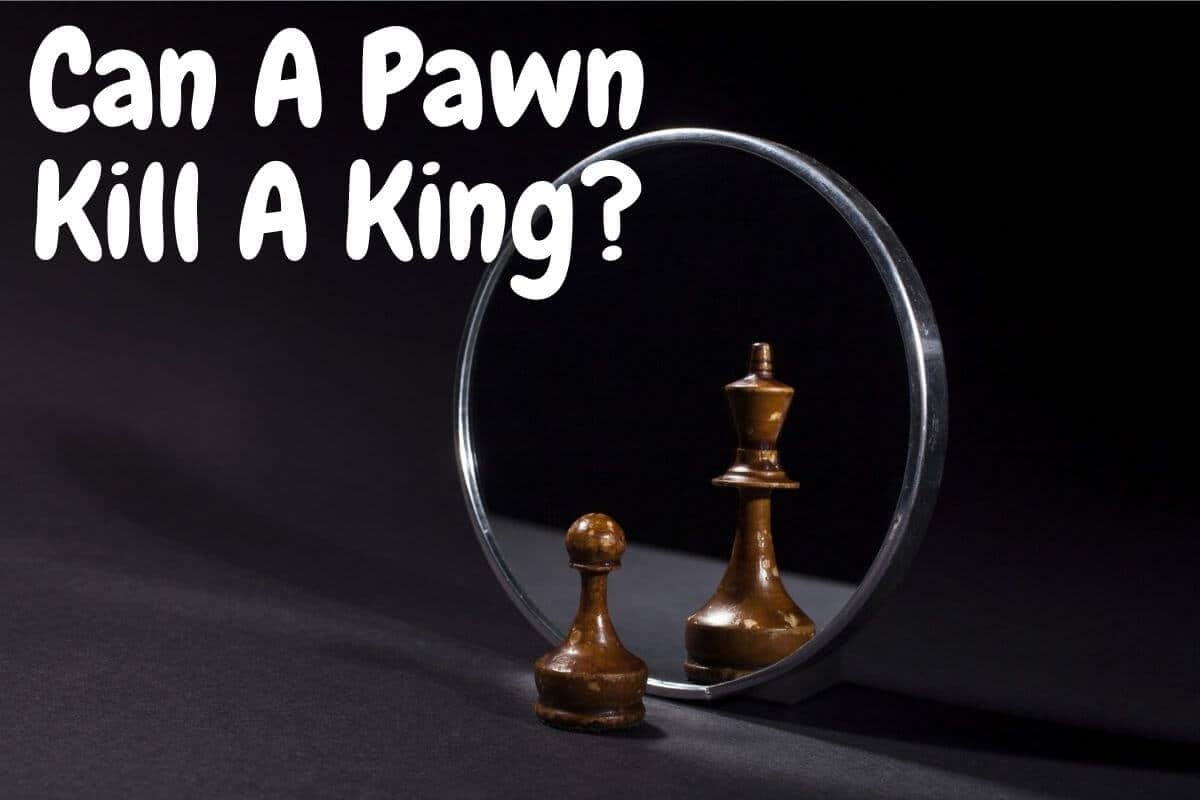The piece we now know as the Bishop originated in India and would have appeared as an elephant in an Indian chess set. When chess arrived in the west, European players remodeled the piece to represent a member of the church clergy, who used to hold positions of great power in royal courts. The Bishop is clearly identified by his miter (the hat worn by church bishops).
How Does The Bishop Move In Chess
Bishops move diagonally, as many squares as they want to at a time, both forward and backward. They always stay on their starting color.
Bishops can’t jump over any other pieces. If another piece is in his way, the Bishop must either stop before he reaches that piece, or capture it. Here, the white Bishop can capture the black Rook.
The bishop moved diagonally in a straight line
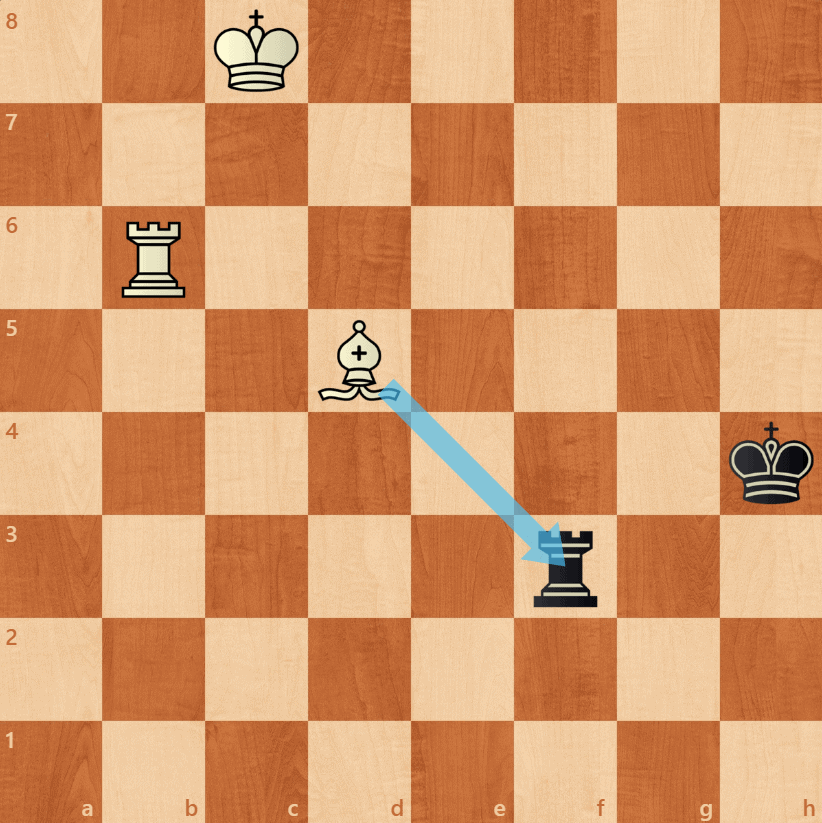
Tips to remember when moving your Bishop
- At the start of the game, you have two Bishops. One moves on the light squares, the other on the dark squares. Bishops always stay on the color that they started on.
- If you end up with both of your Bishops on the same colored square, you know that something has gone wrong and that you have moved one of your Bishops like a banana!
Bishops starting position
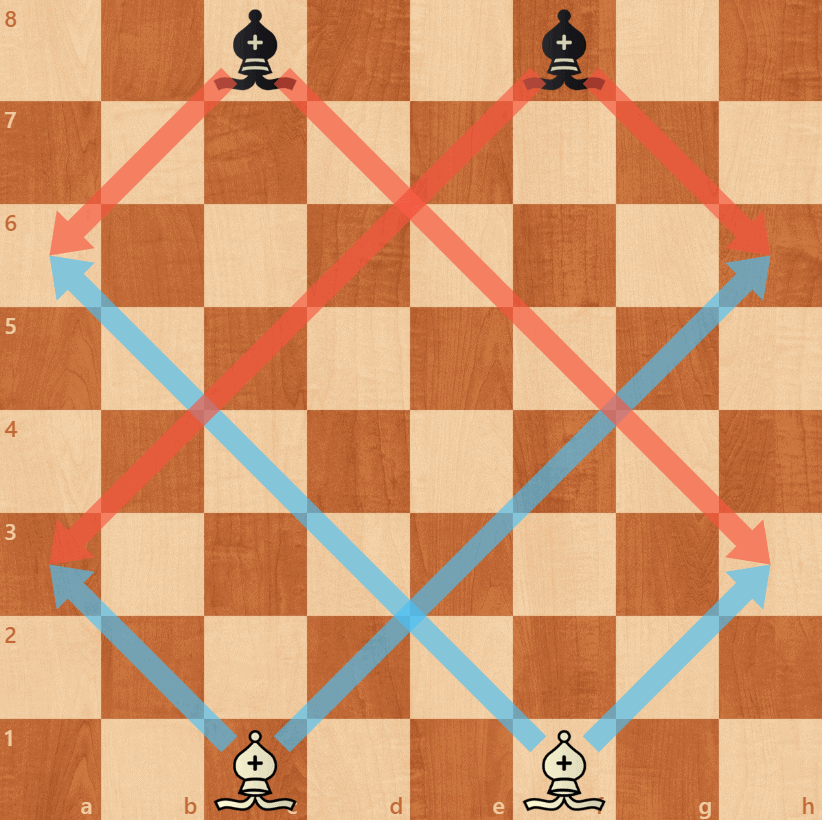
Just concentrate on sticking to your diagonals and don’t block your Bishops in with your pawns.
Good Bishops Vs Bad Bishops
If a Bishop is blocked in by his own Pawns, he is described as a bad Bishop. Here the white Bishop is limited by the white Pawns due to white’s dark square complex, but the black Bishop can move easily all around the board. When you have a bad bishop locked behind a pawn chain, you should find a way to escape it from behind the pawns into open space (lines). The white’s bad Bishop can be freed via Bc1-Bf4.
White has a bad bishop at the moment
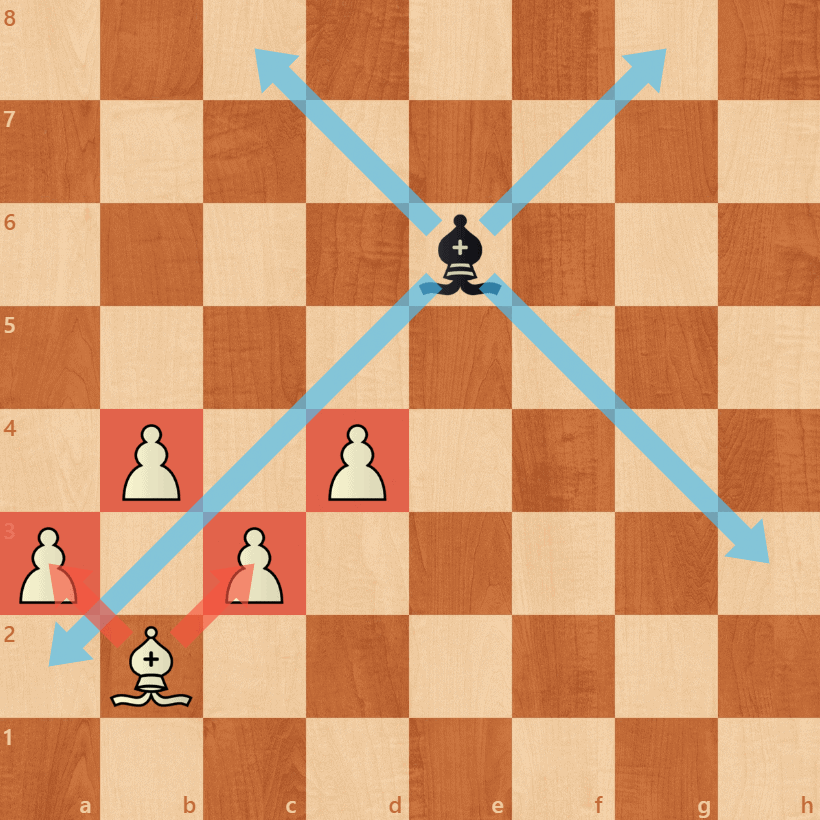
It’s also worth noting that your light and dark-squared Bishops are a great double act. Together they can control large areas of the board. Together they are called a bishop pair. Later you’ll find out more about why the bishop pair is so valuable!
The Fianchettoed Bishop
Fianchetto is the Italian word for little flank. The “-etto” means little and “fianco” is flank or side)
In chess, the fianchetto is a way to develop the Bishop to the side. You do it by moving the g-pawn or b-pawn one square and then putting a Bishop behind it.
When the long diagonal is opened, the bishops can be very strong there. Here, both white Bishops are fianchettoed below.
Fianchettoed bishops have a wider scope
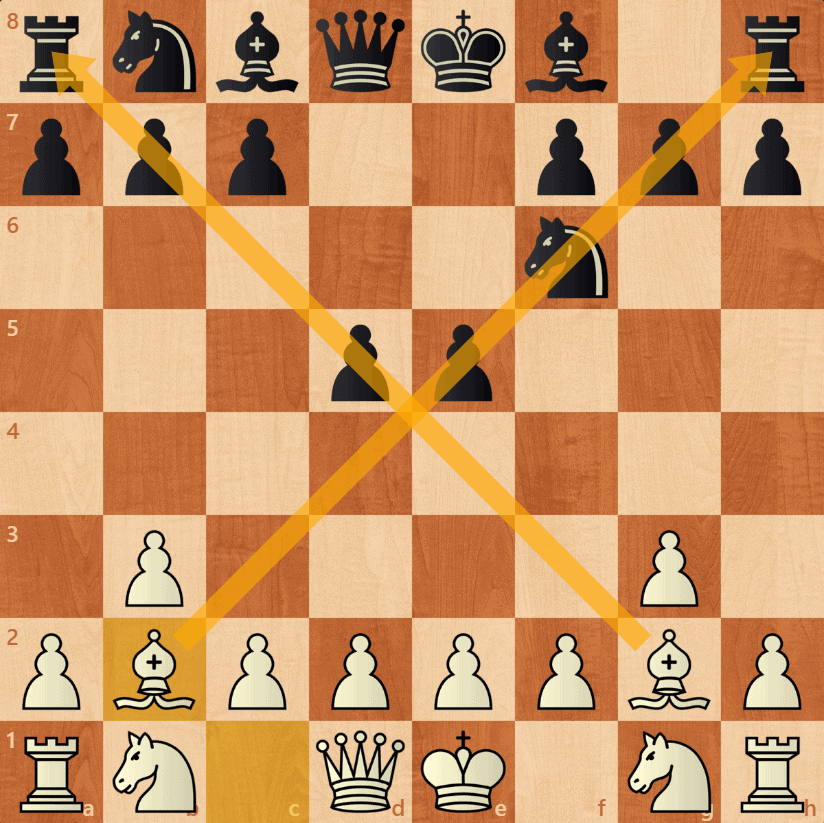
It’s not always good to fianchetto your bishops though. The main reason is that it takes two moves to develop the Bishop. There may not be time for it in some situations. A fianchetto is an important part of many openings. In the King’s Indian Defense, black fianchettos on the Kingside. 1.d4 Nf6 2.c4 g6 3.Nc3 Bg7
Typical King’s Indian Fianchetto
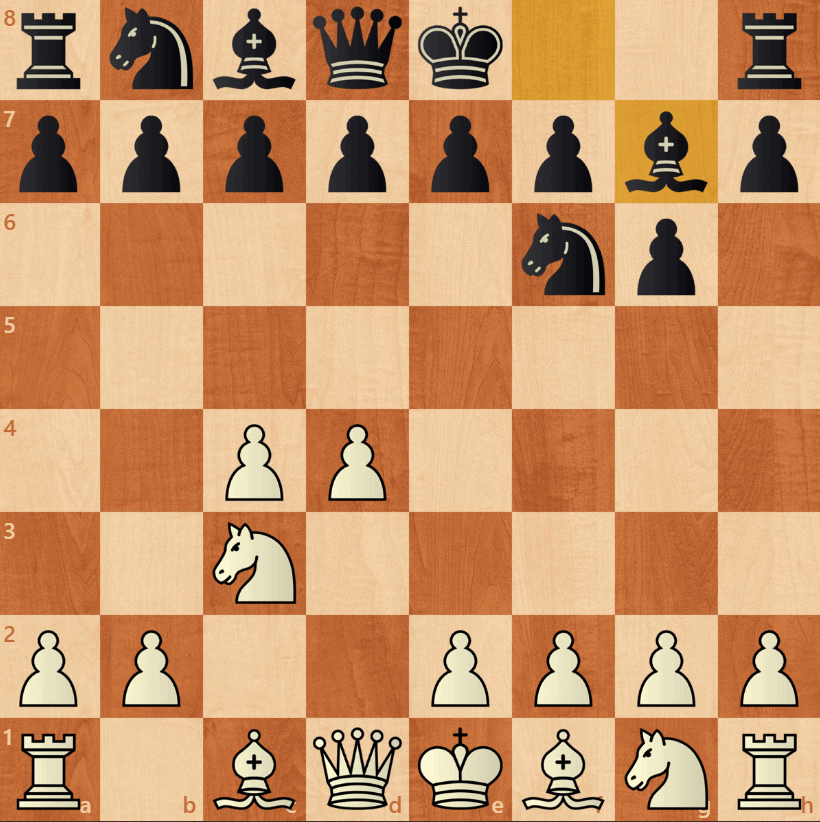
Two other popular defenses that use a fianchetto are the Queen’s Indian and the Dragon Sicilian. In Italy, fianchetto is pronounced, “fee-in-ket-toe”. But most English speakers say fee-in-chet-toe. All in all, fianchettoing your Bishops is a great move in order to increase their activity.
Types Of Bishops
A Bishop lives for speed, and this little Formula 1 racecar makes anything that dares step onto its diagonal potential road kill. This means that if those diagonals aren’t blocked, the Bishop can be a fierce and highly prized piece.
There are three types of Bishops:
- Active
- Useful
- Tall Paw
1. Active Bishops
A Bishop is considered Active if it’s outside the pawn chain or enjoying life on a reasonably clutter-free diagonal. An active Bishop can dash from one sector to another in a flash, so they always need to be respected.
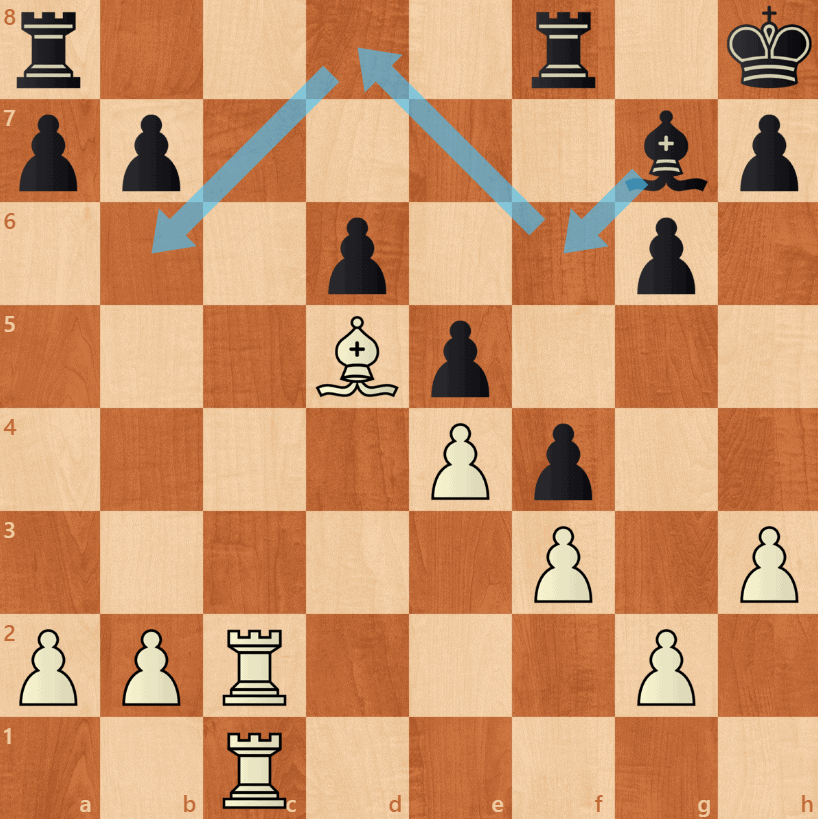
In this position, the white’s Bishop on d5 is very active, unlike the dark-squared Bishop on g7. The fianchettoed Bishop is quite dormant due to the closed center that the pawns have created.
When you have a passive Bishop locked behind a pawn chain, you should find a way to remove that Bishop from behind the pawn chain. Although the Black player is behind in activity, the best plan for him is to maneuver his dark-squared Bishop to b6 square where it will be much more active (Bf6-Bd8-Bb6)
Important tips when moving a pawn:
- Bishops are usually strongest in open positions. The fewer pawns in the way of a Bishop the greater its scope.
- Every time you move a pawn, check to see how it affects the activity of your Bishops! Obviously, turning an open position into a closed one will have a serious effect on these pieces, so train yourself to always take the health and care of your Bishops into account.
2. Useful Bishop
A Bishop is considered “Useful” if it’s doing an important defensive or dynamic task. Such a defensive Bishop can be ugly to look at, but its absence would cause your position to undergo serious difficulties.
Active Bishops are nice, but at times they are merely claiming domination of unimportant real estate. In that case, you have to find or create something for them to do. The dream Bishop is both useful and active. It covers a lot of ground, but it is also serving a very specific and useful purpose.
Useful Bishop guarding d6

Black’s dark-squared Bishop on e7 appears passive. However, if you observe keenly, that same Bishop is serving a useful purpose by guarding the backward d6 pawn. If you should take away both dark-squared Bishops from the game, Black’s position would fall and white could easily gobble up the weak d6 pawn with his Queen. Black’s dark-squared Bishop is a Useful Bishop!
3. Tall Pawn
A Bishop is said to be a Tall Pawn if it’s not serving a useful function and is trapped behind its pawns (thus making it inactive). This kind of Bishop takes on the persona of an overgrown pawn that, sadly, can’t turn into a Queen if it reaches the end of the board.
In this position, the white Bishop is completely trapped by the pawn chain and there is nothing he can do to free it. What a shame. On the other hand, the black Bishop is active and is free to roam about. Be careful not to end up as white!
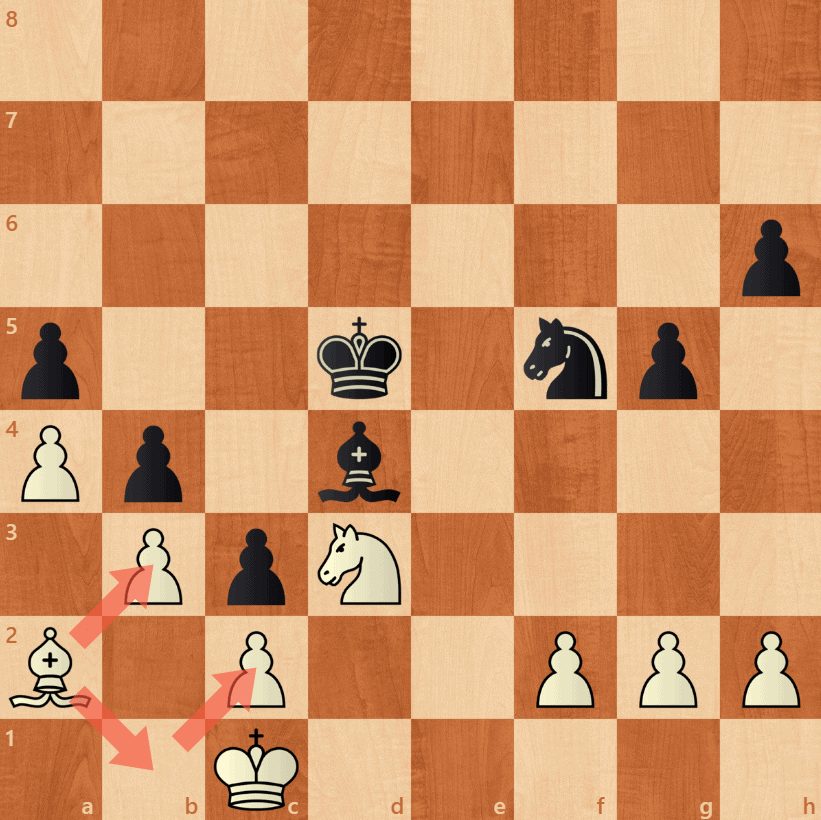
(White’s Bishop is now just a tall pawn)
What to do when you have a Tall-pawn:
- Get your pawns off the color of your Bishop (unblocking it).
- Get your Bishop outside the pawn chain.
- Exchange the horrible Bishop for an enemy Bishop or Knight.
Summary – Types Of Bishop
- Bishops are usually strongest in open positions. The fewer pawns in the way of a Bishop the greater its scope.
- Every time you move a pawn, check to see how it affects the activity of your Bishops! Obviously, turning an open position into a closed one will have a serious effect on these pieces, so train yourself to always take the health and care of your Bishops into account.
- While an active Bishop might look good, a useful Bishop trades style for substance and addresses the deeper needs (both dynamic and defensive) of a position.
- Always think twice before placing your pawns on the same color as your Bishop! In general, you should only do this if your Bishop can get outside the pawn chain (which would make it active), or if your Bishop is proving useful (most likely as a defender) inside the chain.
- If you have a Tall Pawn, try to free it by getting the pawns off its color or by getting it outside the pawn chain. Failing those things, you can also try and exchange it for an enemy minor piece (thus following our “trade bad pieces for good ones” rule).
- All the knowledge and good intentions in the world won’t stop you from ending up with a Tall Pawn from time to time. If this occurs, you need to:
- Get your pawns off the color of your Bishop (unblocking it).
- Get your Bishop outside the pawn chain.
Related Post: How do all the chess pieces move?
Bishops Of Opposite Colors
When each player has one Bishop and they move on different color squares, we call them Bishops of opposite colors. One Bishop goes on dark squares, the other on the light. It’s likely they live in two separate worlds.
Since they don’t fight each other in the same diagonals, both Bishops will normally be very strong on their own color. Exchanging them is rather rare because their paths never cross.
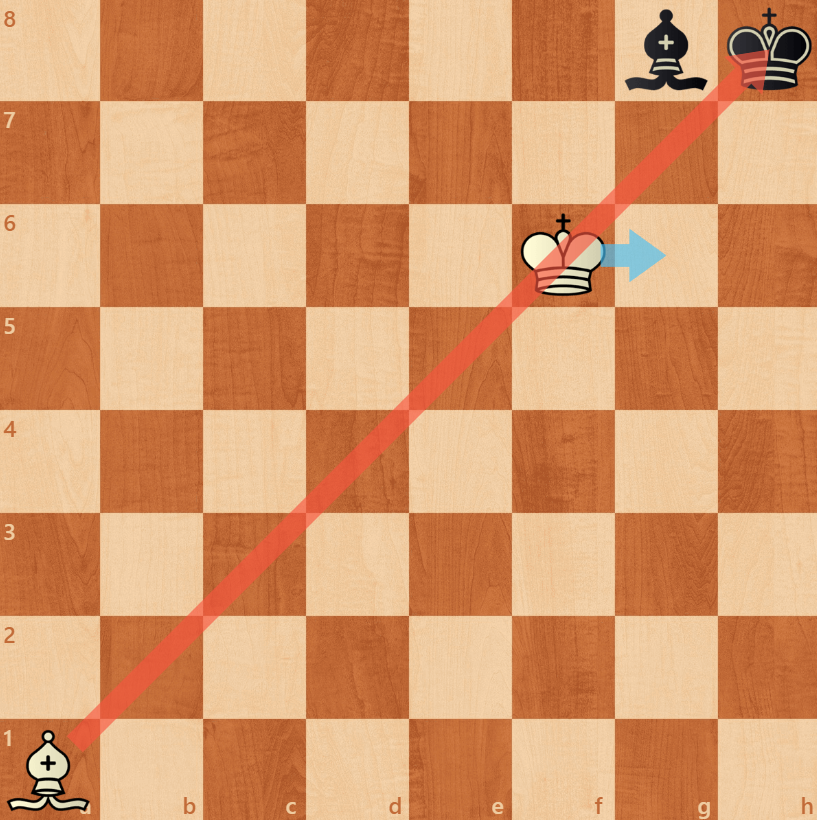
(White to move mate in 1)
Bishops of opposite colors are merely a Bishop vs. Bishop battle. Yet, it’s a strange battle that resembles a war between two creatures in different dimensions.
Because they will live on different colored diagonals until they are placed in the after-game box, the Bishops can’t touch, they can’t defend what the other attacks or attack what the other defends! and if you place your pawns or King on the opposite color of the enemy Bishop, the ghost-Bishop will find that it can’t touch anything at all.
Bishops in different dimensions
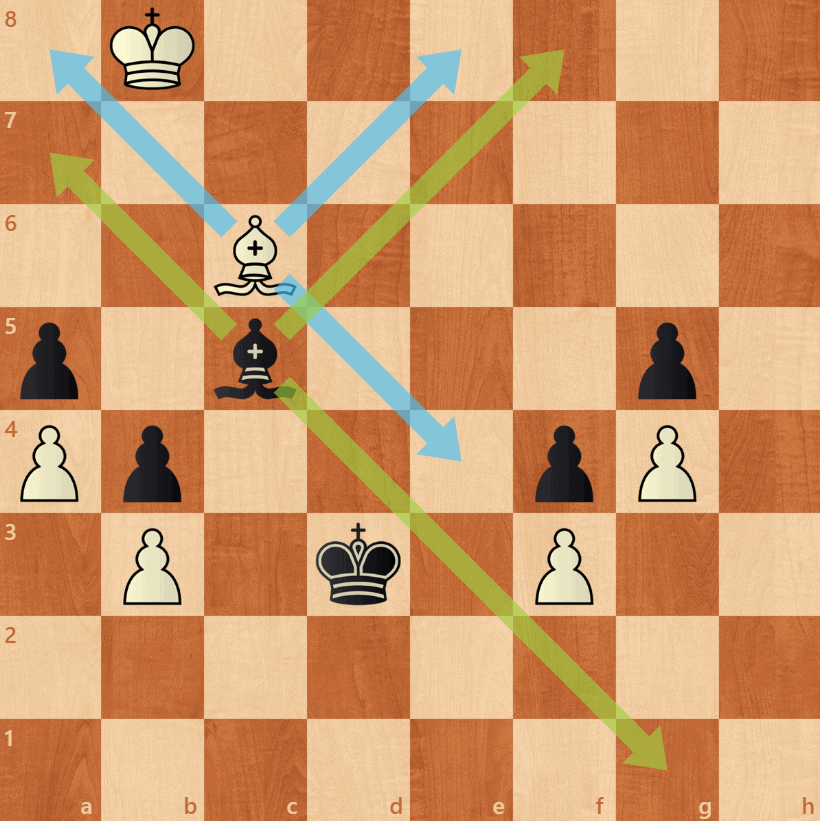
The game is a dead draw. The black Bishop cannot attack any of the white pawns because it’s stuck in a different dimension. The same goes for the opposing player. Opposite-colored Bishops have a strange effect on the game!
In the endgame, they help the defender. Endgames, where one side has an extra pawn, are usually drawn. And there are many positions where an advantage of two pawns is not enough to win.
In the middle game, it’s the opposite, Bishops favor the attacker. Their dominance of one color frequently allows a winning breakthrough.
The Bishop Pair
Possessing two Bishops is far better than only having one because of the Bishop’s main weakness, its inability to control a whole color complex, which is cured by the fact that both white and dark diagonals can now be fully patrolled.
Of course, if the position is closed and all diagonals are blocked, the Bishops might not be very impressive. But, in general, the Bishop pair is indeed a nice thing to have and needs to be dealt with by the opponent.
The simplest way to remove this problem is to exchange one of the enemy Bishops. Either by trading your Knight or Bishop for an enemy Bishop, thus creating a far more manageable Bishop vs. Knight or Bishop vs. Bishop situation.
The power of two Bishops
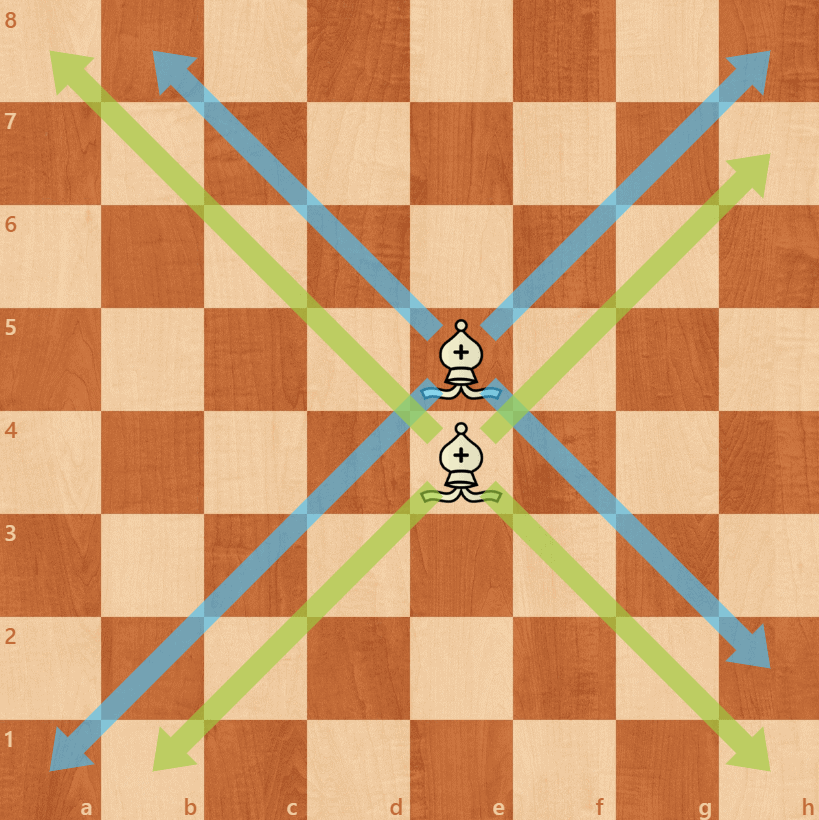
Conclusion – How does the Bishop move in Chess
The Bishop is a long-ranged piece. It can get from one side to the other in a single turn. Its weakness is that it can only go on one color.
The bishop can move any number of squares, provided they are all diagonal. It cannot jump over pieces in its way. If the Bishop starts on a black square, it has to move diagonally to a black one, and vice versa. The bishop is good for covering or protecting other pieces on the board.
On the board, you will have just two bishops for your chosen color. The one that sits on a white square is allowed to move diagonally on the white, and the black moves only on the black squares, diagonally.
Related Post: How does the Rook move?





